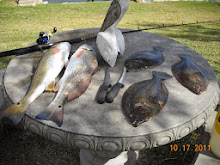The placenta shed from goats with classical scrapie is infectious to goat
kids and lambs
David A. Schneider, D.V.M., Ph.D. (das@vetmed.wsu.edu)1, Sally A.
Madsen-Bouterse, Ph.D.2, Dongyue Zhuang3, Thomas C. Truscott4, Rohana P.
Dassanayake, Ph.D.5 and Katherine I. O'Rourke, Ph.D.6
+ Author Affiliations 1 Animal Disease Research Unit, Agricultural Research
Service, U.S. Department of Agriculture 2 Department of Veterinary Microbiology
and Pathology, College of Veterinary Medicine, Washington State University 3
Animal Disease Research Unit, Agricultural Research Service, U.S. Department of
Agriculture 4 Animal Disease Research Unit, Agricultural Research Service, U.S.
Department of Agriculture 5 Department of Veterinary Microbiology and Pathology,
College of Veterinary Medicine, Washington State University 6 Department of
Veterinary Microbiology and Pathology, College of Veterinary Medicine,
Washington State University Received 5 March 2015. Revised 9 April 2015.
Accepted 14 April 2015.
Abstract
The placenta of domestic sheep plays a key role in horizontal transmission
of classical scrapie. Domestic goats are frequently raised with sheep and are
susceptible to classical scrapie, yet potential routes of transmission from
goats to sheep are not fully defined. Sparse accumulation of disease-associated
prion protein in cotyledons casts doubt about the role of the goat's placenta.
Thus, relevant to mixed-herd management and scrapie-eradication efforts
worldwide, we determined if the goat's placenta contains prions orally
infectious to goat kids and lambs. A pooled cotyledon homogenate, prepared from
the shed placenta of a goat with naturally acquired classical scrapie disease,
was used to orally inoculate scrapie-naïve prion genotype-matched goat kids and
scrapie-susceptible lambs raised separately in a scrapie-free environment.
Transmission was detected in all four goats and in two of four sheep which
importantly identifies the goat's placenta as a risk for horizontal transmission
to sheep and other goats.
snip...
In conclusion, this study importantly demonstrates that the placenta of
goats infected with classical scrapie can transmit scrapie to susceptible goat
kids and lambs via a natural route of exposure despite relatively sparse
accumulation of PrPSc 179 within the goat’s placenta. Thus, like for sheep, the
parturient materials and postpartum period of goats must be considered
transmission risks for other susceptible small ruminants and environmental
contamination.
Sunday, August 25, 2013
Prion2013 Chronic Wasting Disease CWD risk factors, humans, domestic cats,
blood, and mother to offspring transmission
>>> Here, in an experimental model of CWD, we have demonstrated
the transmission of infectious prions from clinical and subclinical mothers to
full-term viable, nonviable and in utero harvested offspring, revealing that the
transmission of TSEs from mother to offspring can occur and may be
underestimated for all prion diseases. <<<
Tuesday, September 17, 2013
Mother to Offspring Transmission of Transmissible Spongiform Encephalopathy
TSE prion disease
Wednesday, April 22, 2015
Circulation of prions within dust on a scrapie affected farm
TSS

